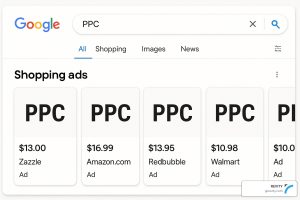Storytelling is an effective blog strategy that can take your blogging game to the next level. It’s the art of conveying a message, idea, or experience through a narrative and a powerful tool that’s been used for centuries to entertain, educate, and inspire. Stories are a fundamental part of human communication, with the ability to connect people on an emotional level.
Whether it’s a bedtime story, a movie, or a piece of marketing content, storytelling can engage, motivate, and influence your audience in a way that nothing else can. Imagine that power harnessed into your blogs. Creating a narrative that your reader resonates with will draw them in and potentially lead to more sales.
That’s what we’re talking about today. We’re diving deep into storytelling and how incorporating it into your blog strategy can be a game changer. Keep reading to learn more about the art of storytelling.
What Is the Art of Storytelling?
You’ve probably heard the term “storytelling” thrown around a lot lately, especially in the world of content marketing. And there’s a reason for it; it can revolutionize your marketing strategy.
But what exactly is storytelling? At its core, storytelling is the art of using language and narrative to convey a message or idea. It’s a way of communicating that has been used for centuries to educate, entertain, and connect with others.
In the context of blog writing, storytelling refers to using a narrative structure to convey your message or ideas. This might involve using anecdotes, personal experiences, or fictional scenarios to illustrate your points and engage your readers.
By using a story to convey your message, you can create an emotional connection with your audience and make your content more memorable and shareable.
So what are the different elements of storytelling? At its most basic, a story typically involves a protagonist (or main character), a setting, a conflict or challenge, and a resolution or outcome. These elements work together to create a narrative structure that draws the reader in and keeps them engaged.
But storytelling is about more than just the nuts and bolts of narrative structure. It’s also about creating a sense of atmosphere and setting the tone for your content. This might involve using descriptive language to paint a picture for your readers or using dialogue to make your story more engaging.
Now, let’s look at the benefits of incorporating storytelling into your blog strategy.
Benefits of Incorporating Storytelling Into Your Blog Strategy
For your blogs to stand out from your sea of competitors, you’ll need to engage your audience. As we now know, there’s no better way to hook your readers than with storytelling.
Storytelling will allow you to engage your readers, create an emotional connection, make your content more memorable (and shareable!), build brand loyalty and trust, and highlight your personality and values.
Let’s take a closer look at how each of the aspects of storytelling can help your blog strategy.
1. Storytelling Engages Readers and Creates an Emotional Connection.
When you use storytelling in your blog writing, you can create an emotional connection with your readers that you simply can’t achieve with a straightforward, factual approach.
By using a narrative structure, you can draw readers in and make them feel invested in the story you’re telling. When readers feel emotionally invested in your content, they’re more likely to keep reading, share it with others, and come back for more.
Storytelling allows you to tap into universal human emotions and experiences, which makes your content more relatable and resonant. By engaging readers on an emotional level, you can create a more meaningful connection with them, which can ultimately help build brand loyalty and trust.
2. Storytelling Makes Your Content More Memorable and Shareable.
Storytelling is a powerful tool that can transform your content from forgettable to unforgettable. By weaving a narrative into your writing, you can create a connection with your audience that goes beyond the mere transmission of information.
Stories have the ability to evoke emotions, spark imaginations, and leave a lasting impression on readers. When your content is memorable, it’s more likely to be shared and talked about, extending its reach and impact.
To create content that truly resonates with your audience, consider incorporating storytelling techniques into your writing.
3. Storytelling Helps Build Brand Loyalty and Trust.
Storytelling can be a powerful way to build brand loyalty and trust among your audience. By sharing stories demonstrating your brand’s values, personality, and mission, you can connect with your audience on a deeper level and build a sense of community.
When people feel connected to your brand and its story, they’re more likely to see you as a trusted ally and advocate. In addition, storytelling can help humanize your brand and make it more relatable to your audience, ultimately leading to increased loyalty and advocacy.
Using storytelling to create a compelling brand narrative, you can differentiate yourself from your competitors and build a loyal following that will stick with you over time.
4. Storytelling Shows Your Brand’s Personality and Values.
Storytelling is an excellent way to showcase your brand’s personality and values. By sharing stories that align with your brand’s values and highlight its unique personality, you can create a more personal and relatable connection with your audience.
The tone and style of your storytelling can help convey your brand’s personality, while the content of your stories can showcase your values and beliefs.
Whether you’re highlighting a customer success story or sharing behind-the-scenes glimpses of your brand’s history, storytelling can help you demonstrate what makes your brand unique and build a more personal connection with your audience.
When your audience feels that they know and understand your brand’s personality and values, they’re more likely to trust and support your business over the long term.

How to Incorporate Storytelling Into Your Blog Strategy?
Now that we’ve discussed the benefits of storytelling in your blog strategy, let’s look at how to incorporate it into your blog strategy.
You can identify what makes your brand unique, include anecdotes, use descriptive language, and showcase your products. This section covers how to do all of that in depth.
1. Identify Your Brand’s Unique Story and Voice.
To incorporate storytelling into your blog strategy, it’s essential to first identify your brand’s unique story and voice. This involves understanding your brand’s history, values, and personality and using that knowledge to create a brand narrative that resonates with your audience.
Consider the key moments and achievements that have shaped your brand, as well as the challenges and obstacles you’ve overcome. Use these stories to showcase your brand’s authenticity and demonstrate how you stand out from your competitors.
Additionally, think about the tone and style that best represents your brand and appeals to your audience. Whether it’s humorous and irreverent or serious and informative, your brand’s voice should be consistent across all your content, including your blog posts.
By identifying your brand’s unique story and voice, you can create compelling and engaging content that resonates with your audience and reinforces your brand identity.
2. Use Anecdotes and Personal Experiences to Illustrate Your Points.
Incorporating anecdotes and personal experiences into your blog posts can effectively make your content more relatable and engaging. By sharing personal stories related to your topic, you can add a human element to your writing and help your audience connect with your content on a deeper level.
Whether you’re sharing a personal struggle or a moment of triumph, personal anecdotes can help illustrate your points and bring your ideas to life. Just be sure to keep your anecdotes relevant and concise, and avoid oversharing or going off on tangents that detract from your main message.
By using personal experiences to illustrate your points, you can create more memorable and impactful blog posts that resonate with your audience.
3. Use Descriptive Language to Paint a Picture for Your Readers.
Using descriptive language is a powerful tool for creating vivid and engaging blog content. By painting a picture with your words, you can transport your readers to a different time, place, or experience and help them feel more emotionally connected to your content.
Whether you’re describing a beautiful sunset, a bustling city street, or a mouth-watering meal, using sensory details like sight, sound, smell, taste, and touch can help your readers imagine and experience the scene for themselves.
Additionally, using descriptive language can help you create a more immersive and memorable reading experience and make your content stand out from the many other blog posts out there.
Just be sure to balance your descriptive language with clarity and concision, and avoid overloading your readers with too many details that may distract from your main message.
4. Use Storytelling to Introduce and Showcase Your Products or Services.
Using storytelling to introduce and showcase your products or services can be an effective way to create a deeper emotional connection with your audience.
By framing your products or services within a compelling narrative, you can help your audience understand how your offerings can solve their problems, meet their needs, or enhance their lives.
For example, instead of simply listing the features and benefits of your product, you can tell a story about how your product helped someone overcome a challenge or achieve a goal.
By doing so, you can create a more memorable and impactful message that resonates with your audience and encourages them to take action.
Additionally, using storytelling to showcase your products or services can help differentiate your brand from your competitors and create a more engaging and memorable customer experience.
Tips for Effective Storytelling in Blog Writing
Of course, we won’t leave you without some tips and tricks for compelling storytelling in your blogs.
1. Keep it Concise and Focused.
When it comes to storytelling in blog writing, it’s important to keep your narrative concise and focused. While it can be tempting to include every detail and digression, doing so can quickly lose your reader’s interest and distract from your main message.
To keep your storytelling on track, start by identifying the key message or takeaway you want to convey and structure your narrative around that central idea. Additionally, try to keep your story as brief as possible while still conveying all the necessary information and emotional impact.
By keeping your storytelling concise and focused, you can create a more impactful and memorable narrative that resonates with your audience and encourages them to engage with your content.
2. Use a Clear and Compelling Narrative Structure.
Using a clear and compelling narrative structure is essential to effective storytelling in blog writing. Your narrative should have a clear beginning, middle, and end, and follow a logical sequence of events that leads to a satisfying conclusion.
This structure helps keep your reader engaged and interested in your story, allowing them to easily follow along with your message. Additionally, using a compelling narrative structure can help you create a more emotional connection with your audience and make your content more memorable.
Consider using techniques like foreshadowing, tension, and resolution to create a more engaging and impactful narrative that resonates with your readers. By using a clear and compelling narrative structure, you can create more effective blog content that captures your audience’s attention and keeps them coming back for more.
3. Use Sensory Details to Bring Your Story to Life.
Using sensory details is a powerful way to bring your story to life and make it more engaging for your readers.
By describing the sights, sounds, smells, tastes, and textures of your setting and characters, you can help your audience fully immerse themselves in your narrative and experience it as if they were there.
For example, instead of simply saying that a character was walking down the street, you could describe the feel of the pavement beneath their feet, the sound of the cars passing by, and the smell of the nearby food vendors.
This level of detail can create a more vivid and memorable experience for your readers and help your story stand out from the crowd. By using sensory details to bring your story to life, you can create a more engaging and impactful narrative that resonates with your audience and encourages them to take action.
4. Use Dialogue to Make Your Story More Engaging.
Using dialogue is a powerful way to make your story more engaging and bring your characters to life. By allowing your characters to speak for themselves, you can create a more authentic and relatable narrative that draws your readers in and keeps them invested in the story.
Dialogue can also help you convey important information and emotions in a more natural and dynamic way than exposition or description alone. To use dialogue effectively, make sure each character has a unique voice and way of speaking that reflects their personality and background.
Use dialogue to move the story forward and reveal important plot points or character developments. By using dialogue to make your story more engaging, you can create a more compelling and memorable narrative that resonates with your readers and keeps them coming back for more.
Incorporate The Art of Storytelling Into Your Blogs With Revity Marketing Agency
Perhaps storytelling compels you, but you don’t consider yourself a writer or don’t have the time to attempt storytelling yourself. Thankfully, REVITY Marketing Agency is here to help. We’re experts at incorporating storytelling into your blogging strategy and can help you take your blogs to the next level.
Have questions? Interested in having us write blogs for your business? Contact us today. Simply fill out our form, call us at 801.383.0922, or email us at info@gorevity.com to get in touch with us. We’ll be happy to answer any questions you may have and work with you to incorporate storytelling into your blogging strategy. Don’t wait; you have a story to tell!
































